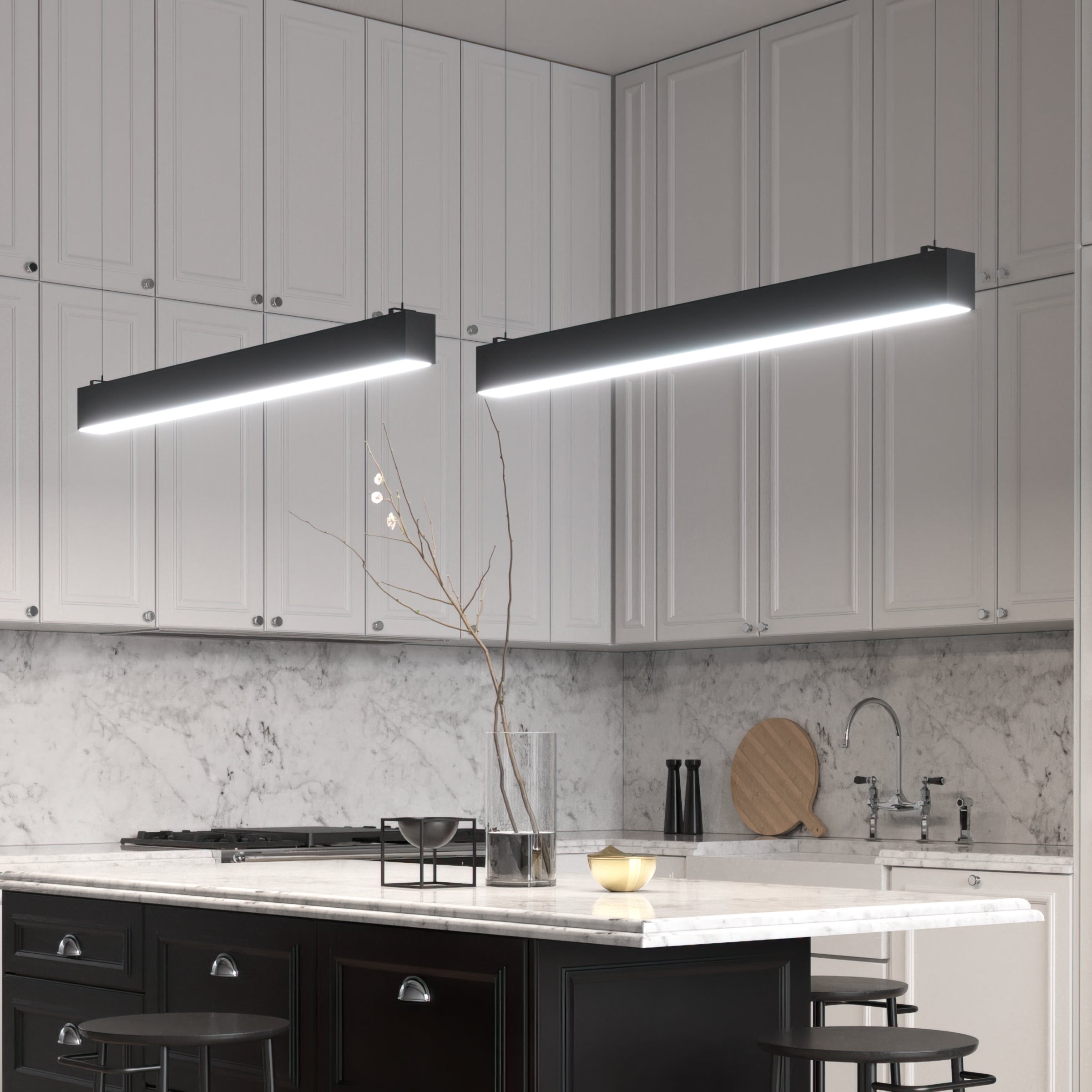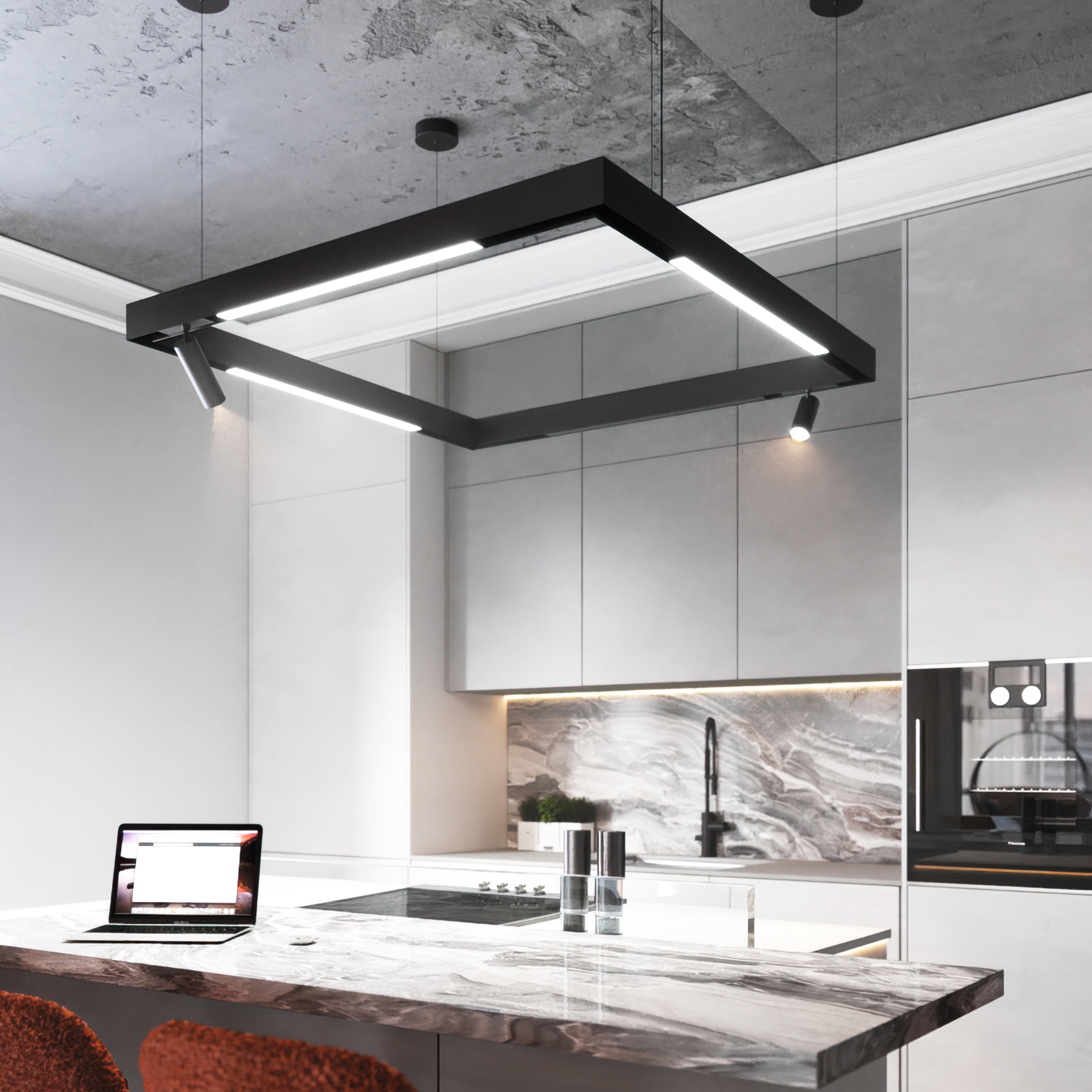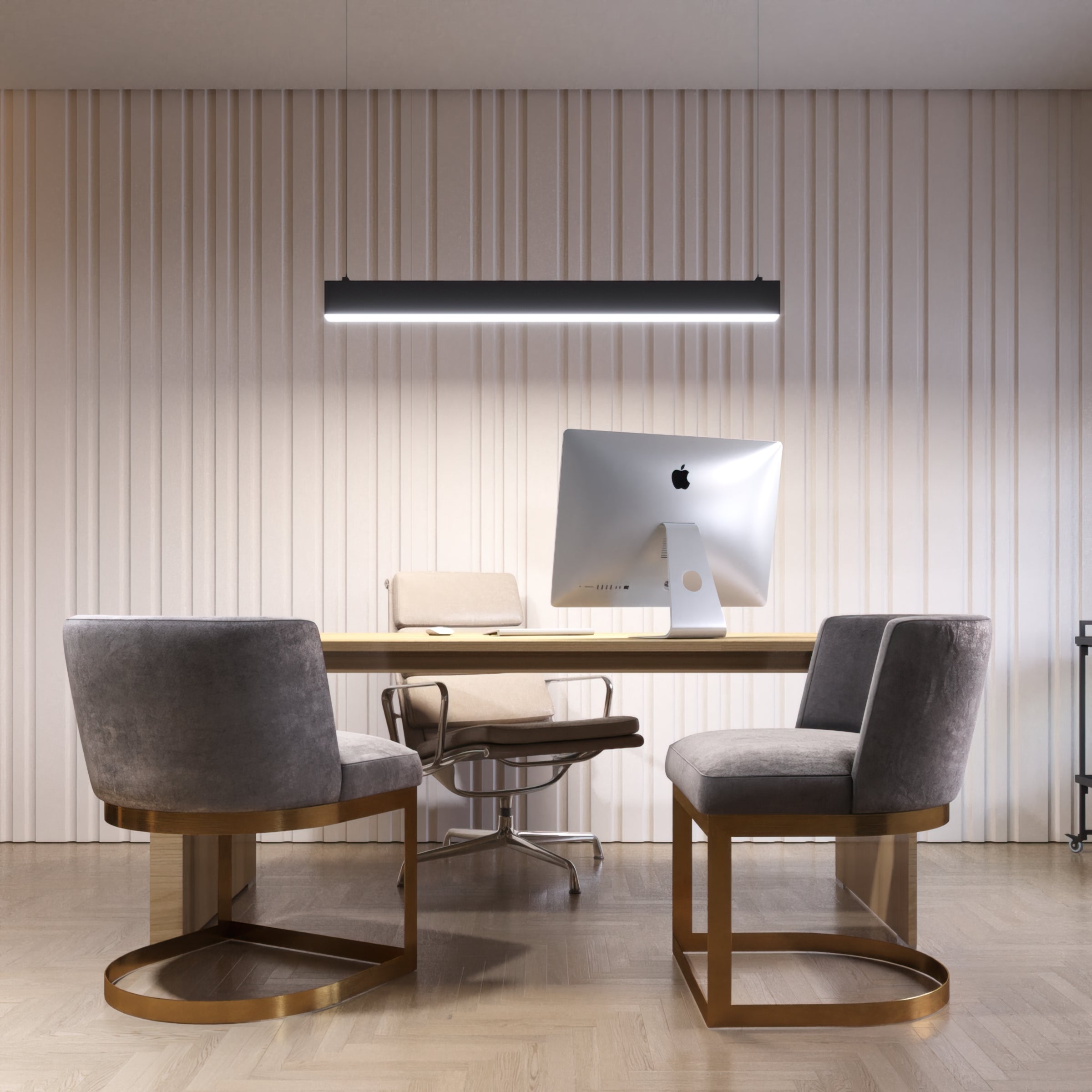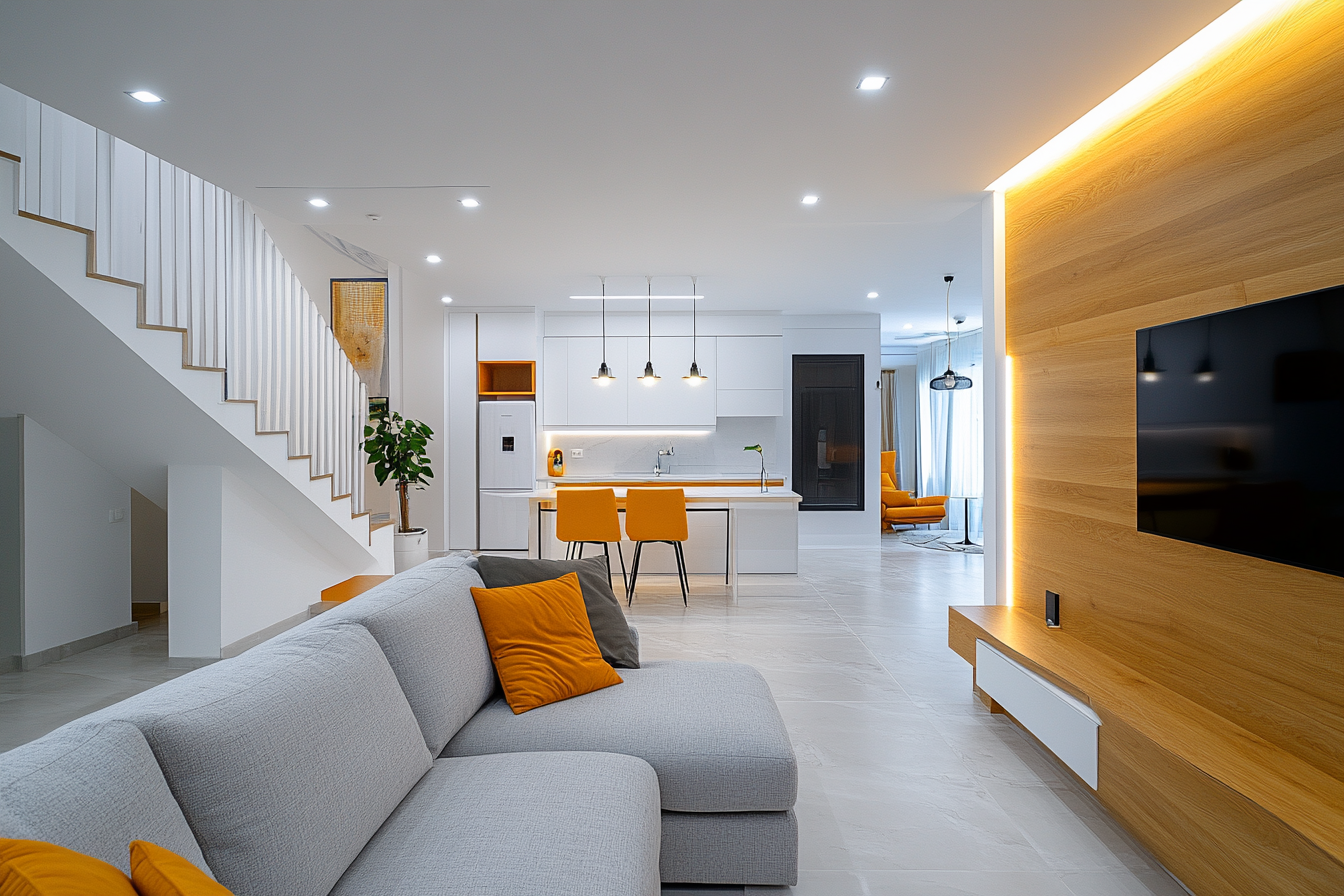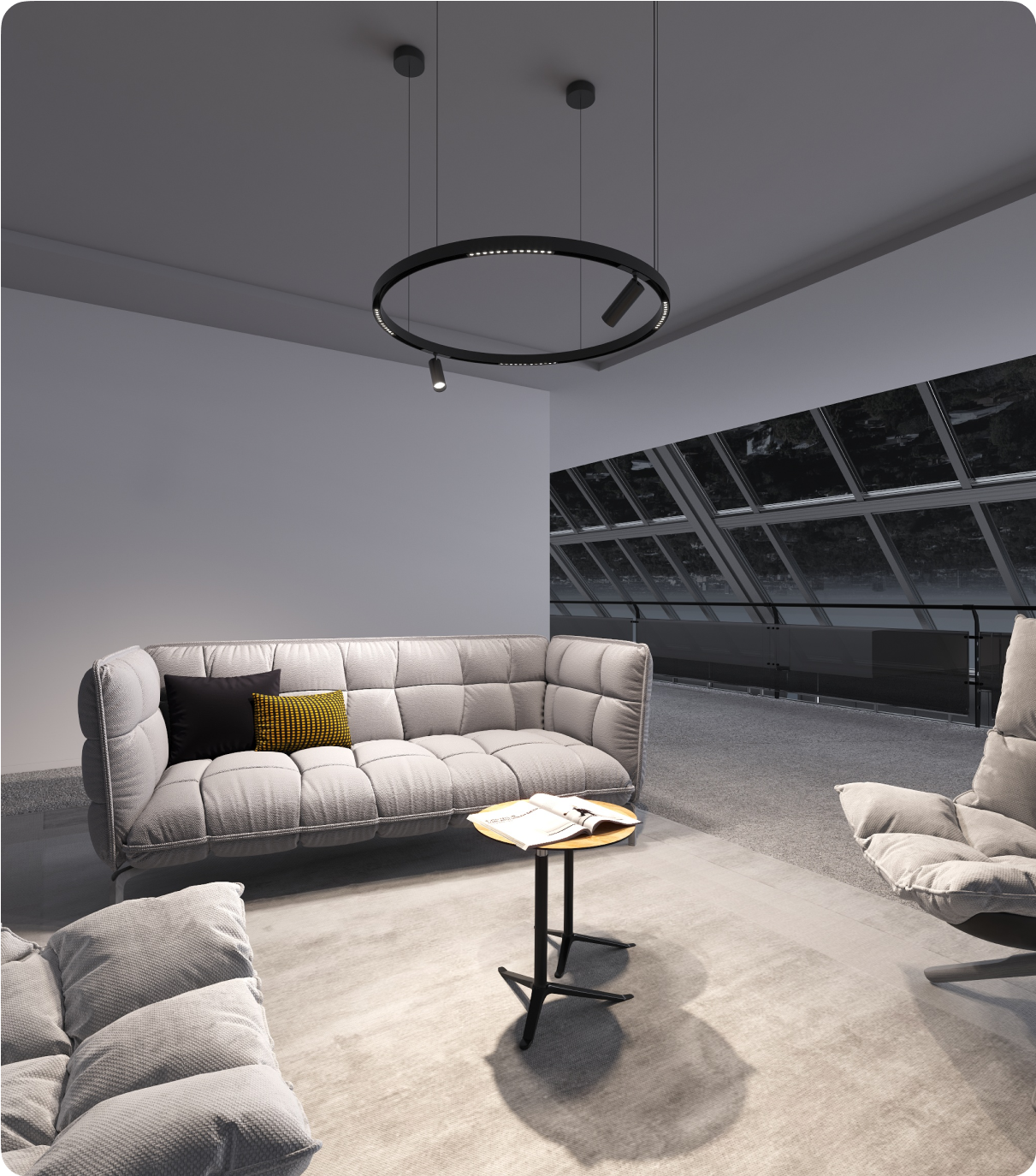LED lighting has changed how we light our environment and is used in homes, offices, and other commercial buildings across the globe. Due to the numerous benefits that come with this energy-efficient lighting solution, this kind of lighting solution has become very popular in the market for both residential and industrial use.
This detailed reference will examine the basics of LED lighting systems, their principles, advantages, and uses. In this guide to LED lighting, you will discover the various aspects of this new solution and why LED is increasingly the choice for those who want to save energy, reduce costs, and improve the quality of illumination.
Moving from saving energy to giving the ability to choose specific lighting, LED lighting technology has revolutionized the lighting world. Let us introduce you to the world of LED lighting, where we uncover the possibilities of this lighting technology and what it has brought to the lighting industry.

Example of using LED lighting in a home's living space
How LED Lighting Works
Tells our expert Sergio Andriichenko, LED Lighting Specialist at LED Lights Direct.
Sergio Andriichenko
An expert in the design of new lighting concepts, explained how dimmable lighting is changing the approach to lighting.
Visit his Linkedin profile
Working for LED Lights Direct, I can state that LED lighting is one of the most innovative technologies in the field of lighting. In its simplest form, LED (Light Emitting Diode) lighting is a process that uses semiconductors.
These materials have the theoretical conductivity of both conductors and insulators of electricity. Still, when current is passed through them, the electrons are displaced, resulting in energy in the form of light being released. It is called electroluminescence and is very efficient since it does not produce as much heat as traditional systems.
The main components of the LED include the chip, which is the semiconductor; the diode, which is a device that only allows current to flow in one direction; and finally, the driver, which regulates the voltage supply to the LED. All these elements cooperate to offer stable and feasible light production services.
LED technology also has the following advantages: it uses less energy compared to conventional lights.
This high efficiency is not just on paper. This forecast shows the great potential of LED light technology in the process of building a more efficient future.
The above advantages of LEDs also include durability. These types of lights are cool to the touch, and because they have a longer lifespan than standard lights, they are not frequently replaced and, therefore, are less costly to maintain.
In essence, LED is a revolution in the lighting field. Through the application of semiconductors and electroluminescence, we have shown that as we continue to develop in this area, the future of lighting is promising.
Advantages of LED Lighting
LED lighting has been considered one of the most effective lighting solutions compared to other traditional lighting solutions. Let's explore some of the key benefits that have contributed to the widespread adoption of LED lighting:

This photo shows an example of LED lighting installation in an open plan kitchen and living room
Energy Efficiency
The first and possibly the most significant advantage of LED lighting is that it consumes a lot of energy. LEDs use less energy and produce a brighter light than the other available traditional types of lighting. This is because they can convert more of the electrical energy they utilize into functional light energy as opposed to thermal energy.
The U.S. Department of Energy explains that LED lights must use at least three-quarters less energy than incandescent lighting. This, in a way, helps reduce the cost of energy bills and strain on the electrical power infrastructure and reduces the emission of greenhouse gases.
Lifespan
LED lights have a longer lifespan than most other lighting options today. According to the studies, the best LED lights should last up to 50,000 hours and even more. In a real sense, if an LED light is used for 8 hours per day, it can work for more than 17 years.
This extended lifespan means that the life cycle costs of replacement and maintenance are greatly minimized. For commercial use and large-scale projects, there will be few changes to the lights, which will lead to cost reduction on the lights and the laborers to change them in the future.
Safety
LED lights are safer than typical lighting sources because they produce little heat. Unlike incandescent lights that dissipate a significant amount of energy in the form of heat, light-emitting diodes work at relatively low temperatures. This low heat emission reduces the risk of burns and fire accidents, thus making the LED lights appropriate for home or business use.
In addition, LEDs are produced with materials that are not easily broken or cracked, making them safe to use. This durability is especially important in applications where the fixtures might be subjected to shock or vibration, such as in an accident.
Environmental Benefits
LED lighting is a much more environmentally friendly option than other lighting technologies used in illumination. Compared with fluorescent lamps, LEDs do not have the potential to pollute the environment by releasing dangerous elements such as mercury, and they also do not pose any disposal difficulties.
In addition, according to the 2013 U.S. Department of Energy Life-Cycle Assessment (LCA), there are more reasons to support the idea that LEDs are eco-friendly. In light of the analysis, LEDs are less hazardous to the environment in the entire life cycle – manufacturing, usage, and disposal – than incandescent and CFL lamps. DOE Life-Cycle Assessment
The LCA also established that LED lighting products use less energy and materials in the production process than CFLs. Furthermore, the study estimated that the environmental effects of LEDs in 2017 would be about half that of CFLs and three-fourths of incandescent lighting in over 15 impact categories.
These findings, therefore, emphasize the importance of LED technology in enabling our overall reduction of the environmental impact. Through LED lighting, consumers and businesses are also able to save energy, decrease wastage, and protect the environment.
Possibilities and the Use of LED Lighting
Sergio Andriichenko says: “Being an expert at LED Lights Direct, I can raise the variety of uses that this type of lighting offers as one of its most significant advantages. LEDs have become an indispensable source of light across many fields and situations and can easily be adapted to different conditions.
In houses, LEDs provide both effective lighting and beauty. As golden in living rooms as well as for task lighting in kitchens, LEDs provide functional and practical light that can enhance the look of a room. They can be used to duplicate natural light or generate a warm environment, which is ideal for any room in the house.
In office and commercial properties, finding a building that does not use LED lights to design the environment is almost impossible. Flashing is also removed in order not to strain the eyes, and they also offer correct color representation, which is important in offices that need to have accurate color interpretation, like design companies or stores.
The same applies to outdoor zones where LED technology provides invaluable assistance as well. Due to their high quality and ability to work in different weather conditions, they can be used for street lighting, car parking, and landscape lighting. The directional light emission of LEDs also does not cause light pollution, which makes urban environments less bright at night.
LEDs are everything that is bright and powerful in industrial applications. Owing to the high lumen output, besides emitting little heat, it is ideal for use in large and commercial organizations, including stores and factories. LEDs' ability to turn on instantly is beneficial in such conditions, as there are no delays linked to warming up, which is characteristic of other sources of light.
Other uses of LED lighting are as astonishing as the general use of LED lighting systems. In a medical environment, LEDs allow the required quality of light and its stability to perform delicate operations. For the same reason, they are used in fields such as phototherapy, where they are required to emit specific wavelengths of light.
LEDs are, therefore, very useful for decorative lighting and various LED lighting applications. The small size and versatility in color create exciting opportunities in architecture, signage, and art. These LED lighting applications showcase the technology's adaptability and creative potential.
One of the most promising trends in the LED lighting industry is the possibility of connecting LEDs to smart systems. LEDs are easy to dim and can be controlled remotely to create any desired lighting effects. When incorporated with motion sensors and daylight harvesting systems, the output of LEDs can be programmed to vary depending on occupancy and the presence of light from the sun, thereby optimizing energy usage.
LED lights are unique in their application in that they can be used in virtually all lighting applications today. In the future, with the further improvement of this technology, I am eagerly waiting to witness the scope of contribution LEDs can make in the future of the lighting industry.”
